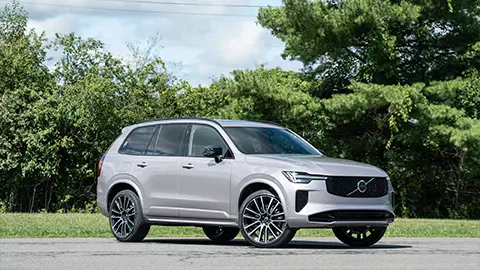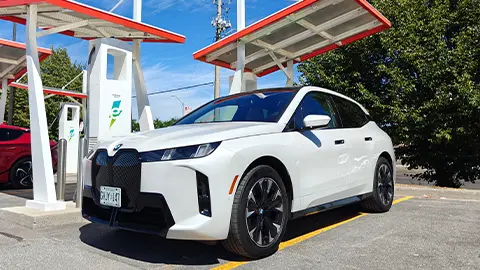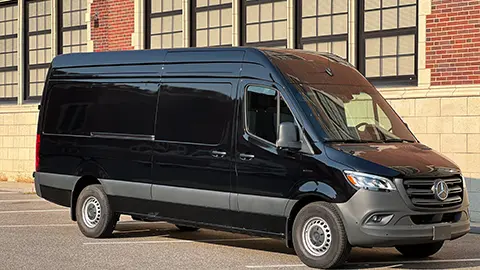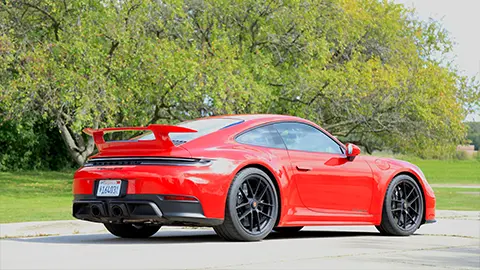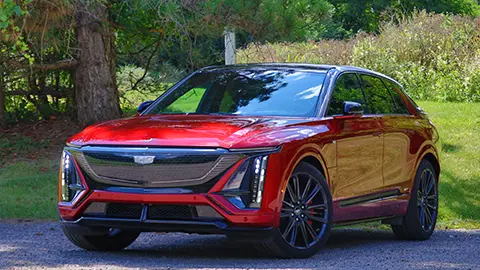Fast Facts – 2026 Nissan Leaf
🔋 Battery Options: 52 kWh (base S), 75 kWh (+ trims)
⚡ Power: 214 hp, 261 lb-ft torque
🚗 Range: Up to 303 EPA estimated miles (SV+), 259 EPA estimated miles (Platinum+)
⚡ Charging: 150-kW DC fast charge: 10–80% in ~35 min
🔄 Port: NACS (DC) + J1772 (Level 2)
💰 Price: MSRP $29,990 S+ | MSRP $34,230 SV+ | MSRP $38,990 Platinum+
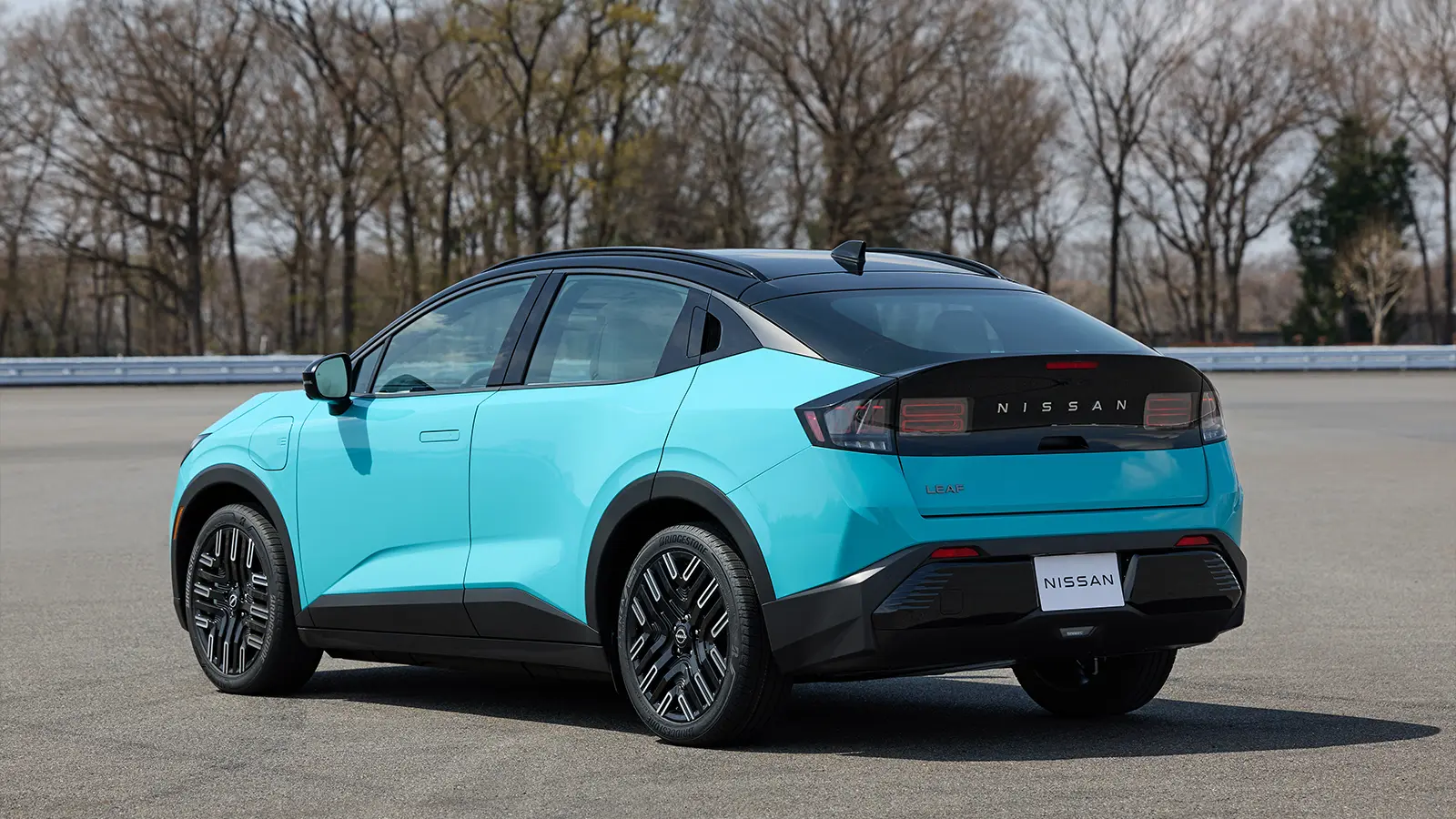
Until recently, the bestselling electric vehicle in the world was the humble Nissan Leaf. Launched in 2010 as the first relatively affordable modern EV, it held that title until the Tesla Model 3 overtook it in 2018, and sales later slowed as competitors entered the market. Now, Nissan is launching the first fully redesigned Leaf since its debut, and I got to drive it.
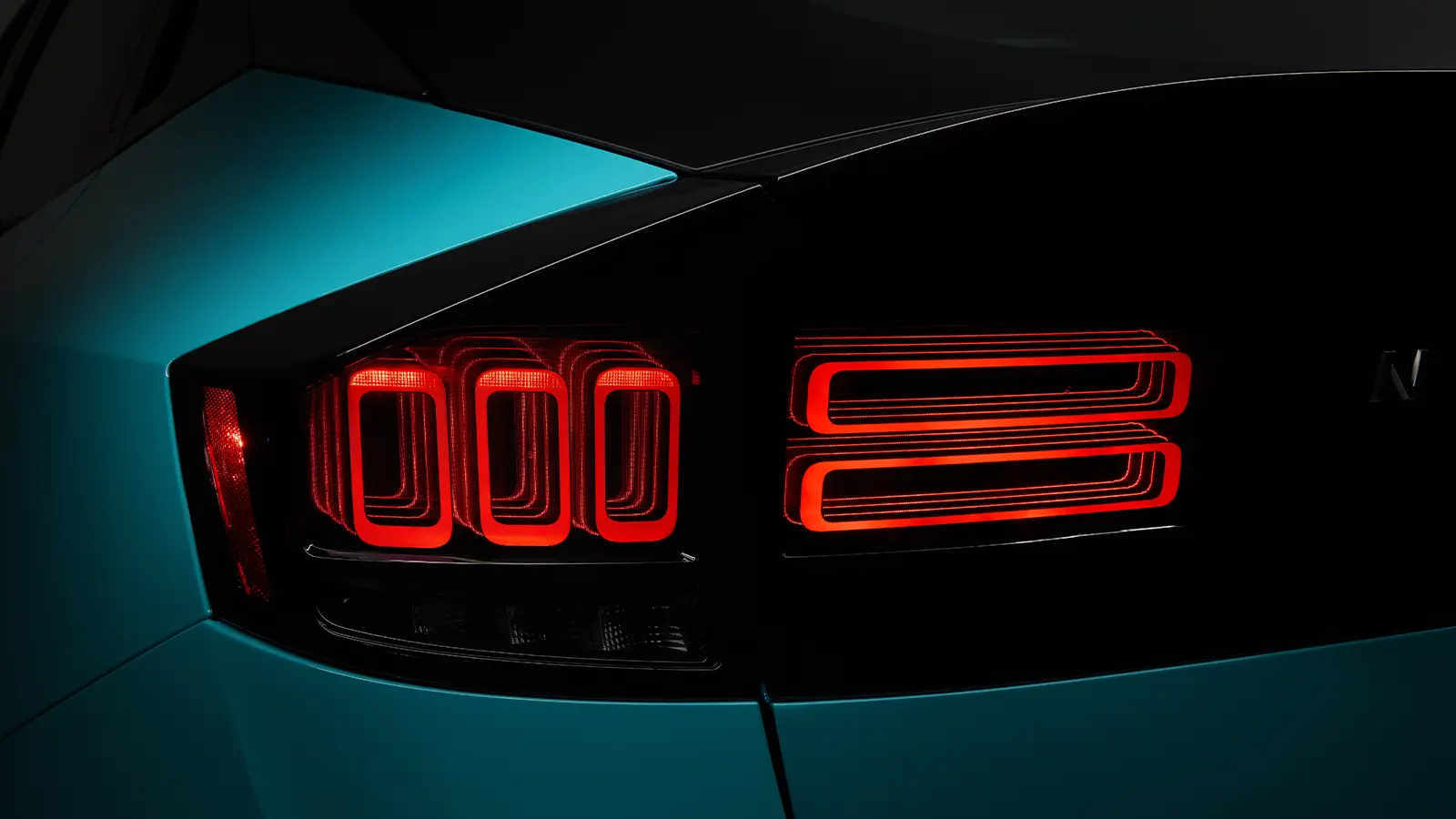
A Different Design Direction
In 2025, the compact hatchback style of previous Leafs is a tough sell, at least in the U.S., so Nissan's designers shifted the new model into something that looks more like a crossover coupe, despite actually being about 3 inches shorter and slightly lower than before. But make no mistake, whatever Nissan labels the Leaf, this is indeed a car, and there’s nothing wrong with that.
New to EVs and curious how charging works? Start here: Overview of Electric Car Charging
The new Leaf is quite attractive. It's essentially an ⅞-scale version of the Ariya. In fact, the two also share the common module family (CMF) architecture, unlike previous Leafs, which used a modified version of the Versa platform. The overall effect of the new shape and proportions is much sportier and more athletic than before, with subtle increases in width and a slightly lower roof that make it look ready to play.
The Leaf does have some distinctive design elements, though. While the Ariya uses more conventional door handles, the Leaf has flush, retracting handles on the front doors that pop out when you approach with the key fob. At the front, it has adopted a version of Nissan's stacked horizontal light bars, but hollow. At the rear, the taillights consist of two horizontal bars and three vertical bars in a subtle tie-in to the brand — the Japanese words for the numbers two and three are “ni” and “san.” Ni-san. Nissan claims the same iconography can be found in 16 locations in and around the car. I found at least eight.
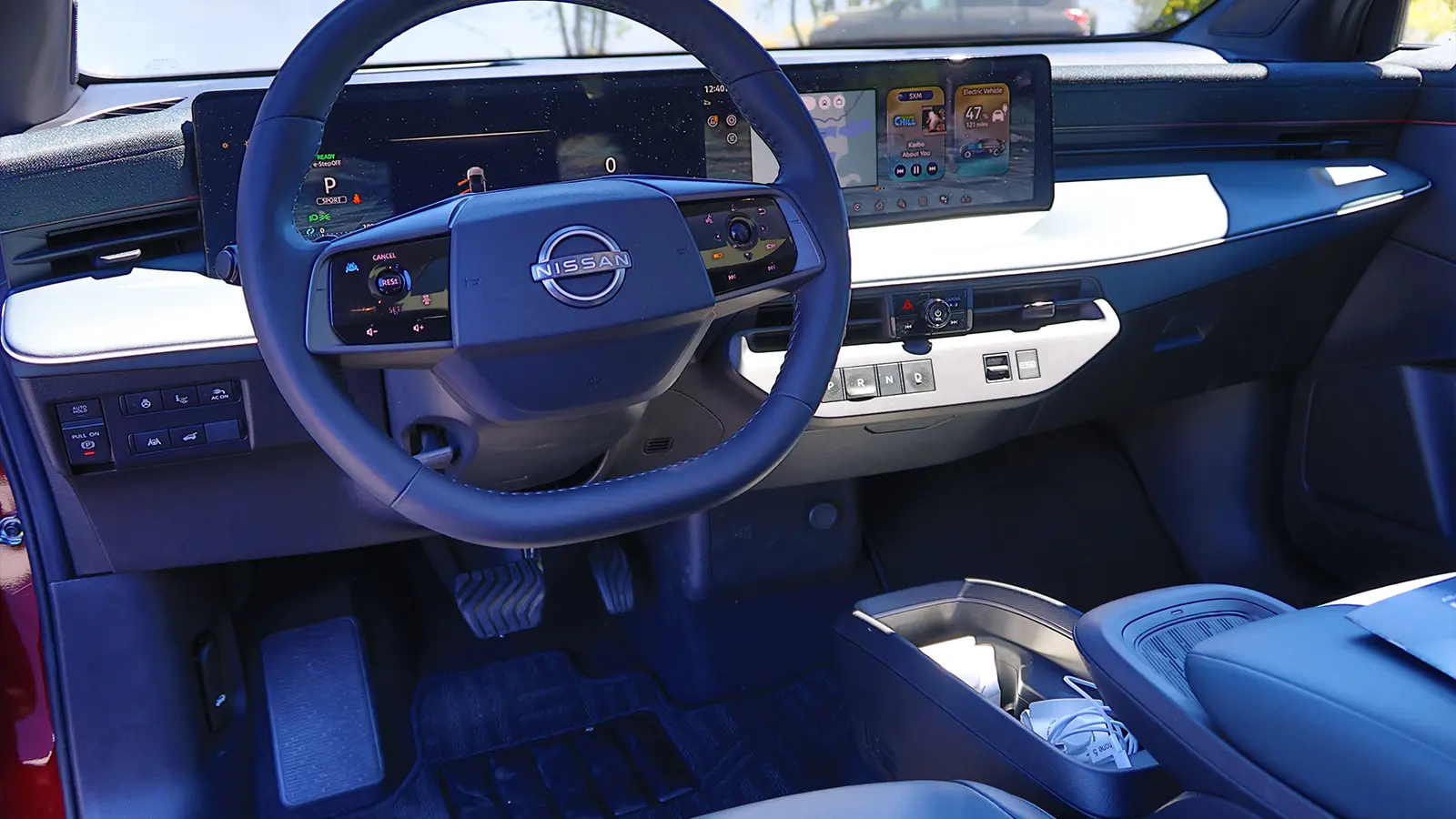
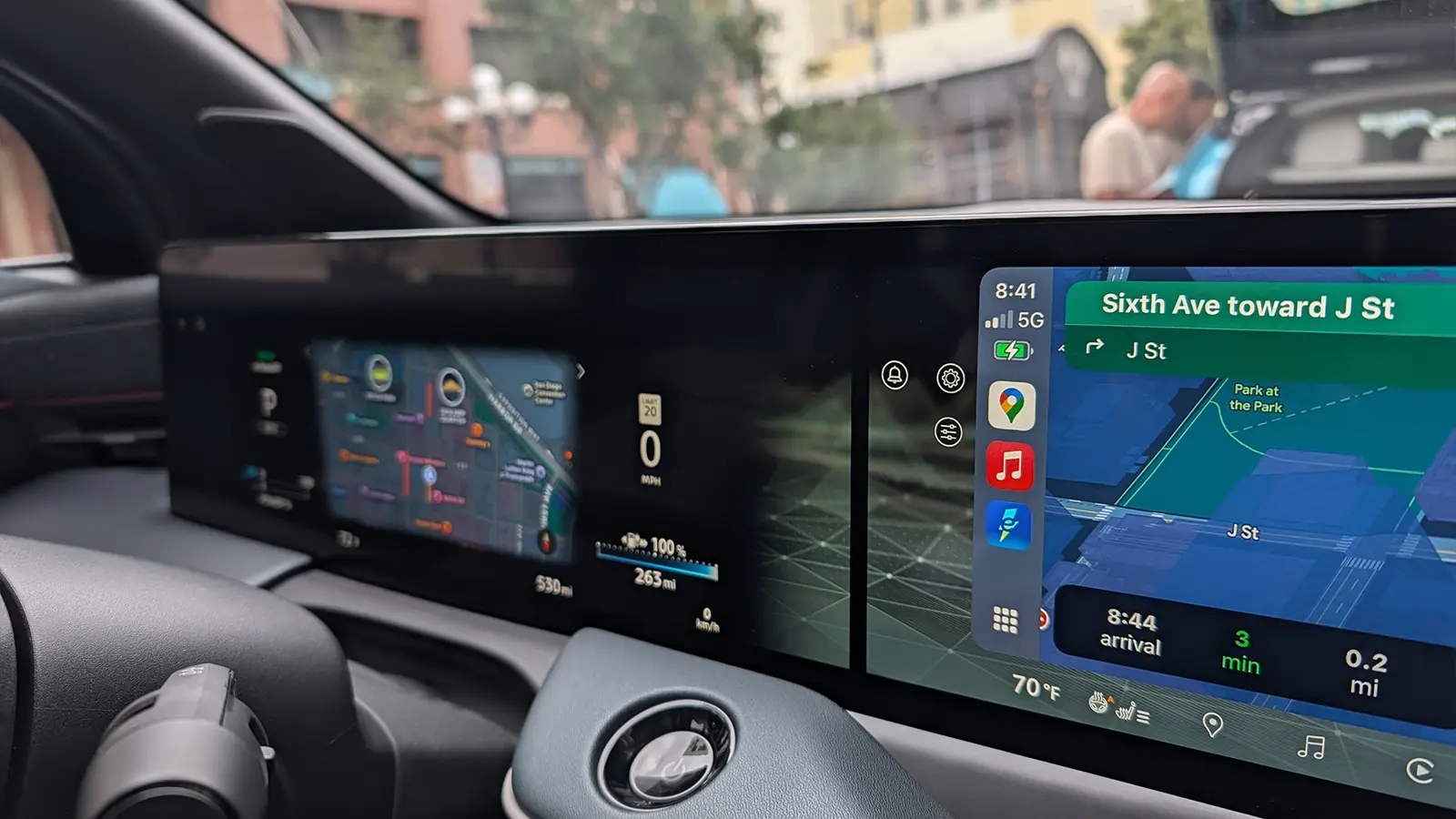
Both Nissan and Google Infotainment Systems
The Leaf's cabin is also much improved and more modern-looking. The base S and S+ trims have 12.3-inch displays for the instrument cluster and infotainment touchscreen, which use an updated version of Nissan’s in-house infotainment system. The SV+ and Platinum+ (I drove the Platinum+) get dual 14.3-inch displays, and the Platinum+ adds a head-up display. This system uses Android Automotive with Google services like Maps, Assistant, and the Play Store built in.
The Google Maps integration also includes route guidance that accounts for your battery's state of charge, recommending the best charging stations to stop at if your destination is beyond your current driving range. Unlike the base system, Google services require connectivity, and Nissan provides one year of service with purchase.
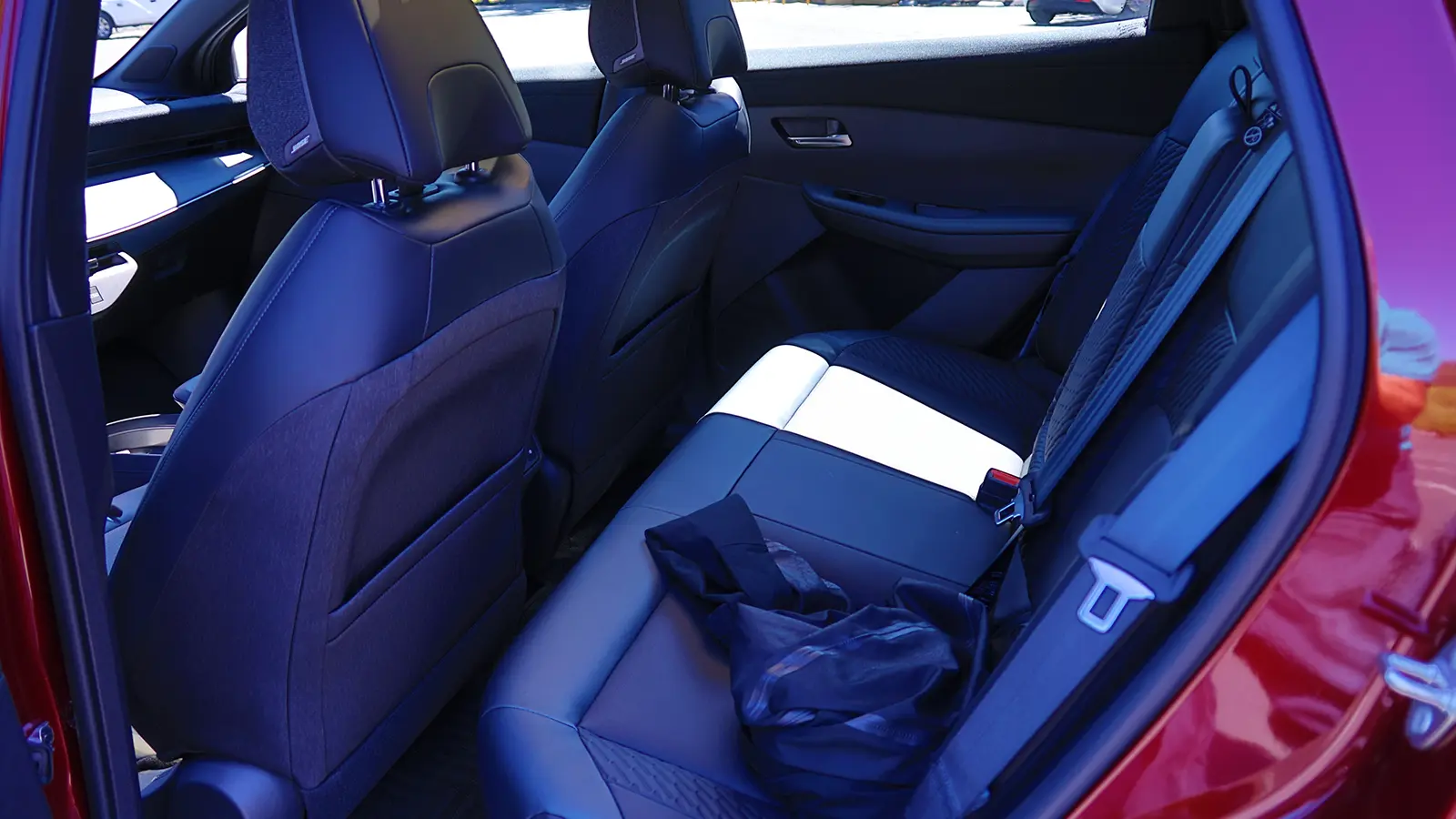
Comfy, If a Bit Cramped, Inside
The odd transmission selector on the old Leaf is replaced by a push-button system similar to many other new Nissans. I was glad to see the Leaf interior almost devoid of the piano black surfaces, which attract dust and fingerprints, that have “graced” Nissans for many years. The other surfaces are matte or nicely textured, and attractive fabric covers the top of the door panels and dashboard. The S and S+ get fabric seats and harder plastics on the rear door panels, while upper trims get synthetic leather seats.
The Leaf's compact size makes urban driving easy, but the back seat is a bit tight. At 5-foot-10-inches tall, I can just fit behind my own driving position, but there's very little toe room under the front seats. Families with younger kids should have no problem, though.
The front seats are quite comfortable and supportive. They did a decent job of holding me in place during some brisk driving on twisting mountain roads, and I didn’t feel any new pains after about four hours in the car.
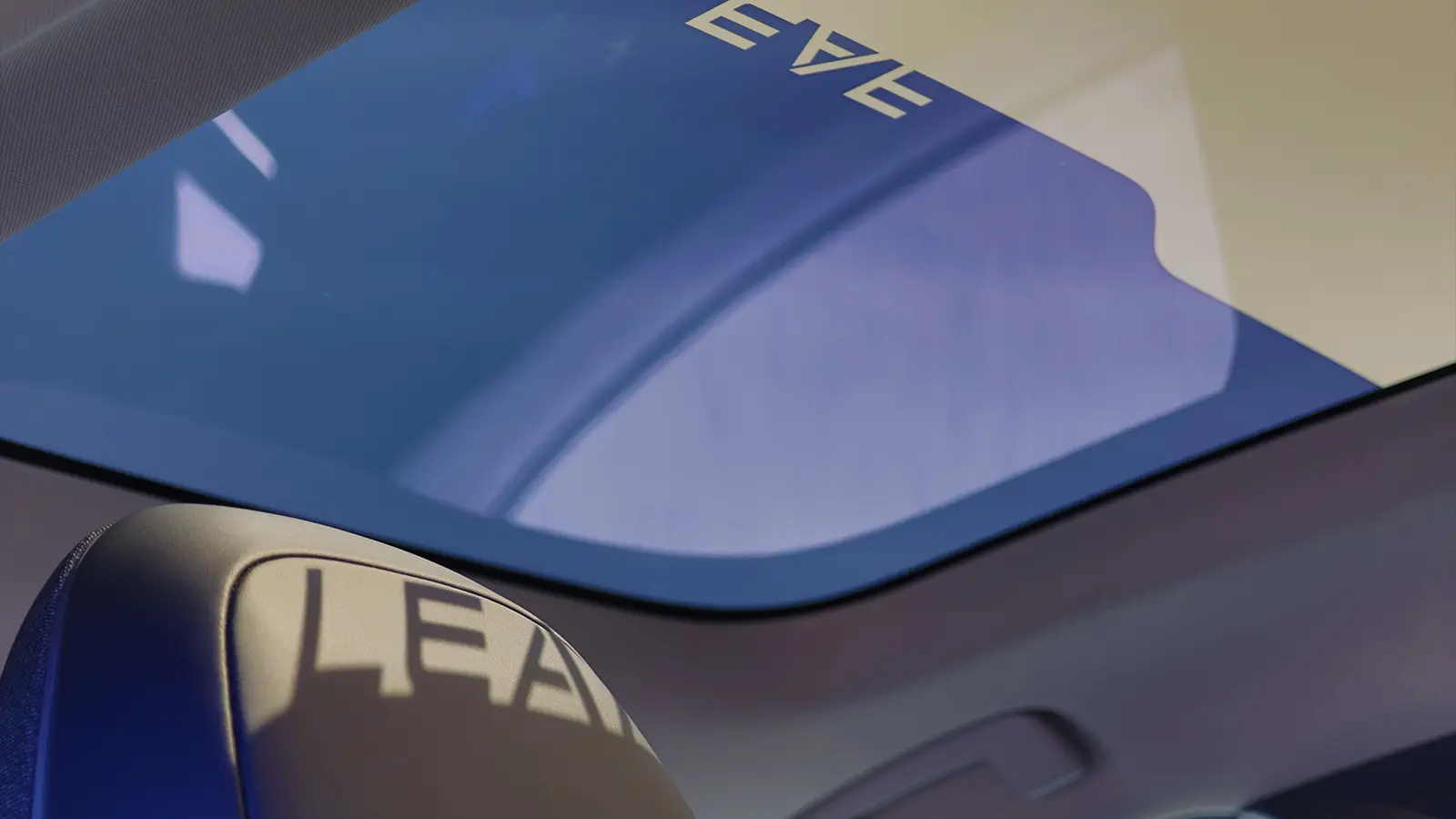
New Battery Protection and More Charging Access
The most important change to the new Leaf is the switch from an air-cooled battery to a liquid-cooled one. This should address the premature degradation issues some early Leaf owners encountered when using the car in hot-temperature climates like Arizona. All 2026 Leafs get an active cooling system to keep the battery from overheating, but an integrated thermal management system with a heater is also standard on the Platinum+ and optional on SV+. This can be used to pre-heat the battery to the optimum temperature for fast charging in cold weather.
Speaking of charging, the Leaf finally ditches the Japanese CHAdeMO port in favor of the new J3400/NACS charging port for DC charging. The port is on the right front fender and will reach the short Tesla Supercharger cables when the car's nosed in. A J1772 port is found on the driver's side, so it’s close at hand when you get home to plug in. According to Nissan, the Leaf peaks at 150-kilowatts on a DC fast-charger and will go from 10 to 80 percent in about 35 minutes — not class-leading, but much faster than the old Leaf that maxed out at 50-kW.
With the 75-kilowatt-hour battery in the + trims launching in a few weeks, the motor produces 214 horsepower and 261 pound-feet of torque. While that’s not going to win any drag races, the instant torque delivery is more than enough for any normal driving, including passing on two-lane roads or merging onto highways.
The S, S+, and SV+ trims all ride on 18-inch wheels, and the Platinum+ gets attractive 19-inch wheels that don’t do much for handling. Anyone who lives in places where the roads are less than pristine may want to opt for one of the trims with 18-inch wheels so the sidewalls have a bit more give and are more likely to survive pothole strikes. You’ll also get more range with the smaller wheels.
The new rack-mounted power steering system is one of the best parts of driving the Leaf. Compared to older systems that mounted the assist motor on the steering column, this feels much more direct with less play. On these twisty roads, this goes right where you point it.
The Bottom Line
Between the responsiveness of the powertrain, the steering, and the suspension, the Leaf has been transformed from a boring but effective commuter car to something actually fun to drive. On top of that, it offers up to 303 EPA estimated miles of driving range, faster charging, and surprisingly affordable pricing in an era when tax incentives have disappeared and tariffs are now a fact of life.
The S+ starts at an MSRP of $29,990 (plus $1,495 destination charge) while the top-end Platinum+ goes for MSRP of $38,990. The weight of the Platinum+'s goodies and its larger wheels drops the range to a still very useful 259 EPA estimated miles. The real sweet spot, though, is the SV+ at an MSRP of $34,230 with plenty of amenities and 288 EPA estimated miles per charge. Those that don’t need as much range may want to wait until next spring when the base S arrives with a smaller 52-kWh battery that will probably still deliver 220-230 miles for several thousand dollars less than the S+.
🌱 Compact EVs Worth Considering
- 2025 Toyota Prius Plug-in Hybrid Review
Toyota’s updated Prius Prime blends efficiency, range, and surprising performance.
Read More ➜ - 2025 Tesla Model 3 “Highland” Road Test
Tesla’s refreshed Model 3 sharpens design, efficiency, and performance in a compact sedan.
Read More ➜ - 2025 Hyundai Ioniq 5 Gets Even Better
Hyundai’s popular crossover adds range and refinement, cementing its spot as a top EV pick.
Read More ➜








